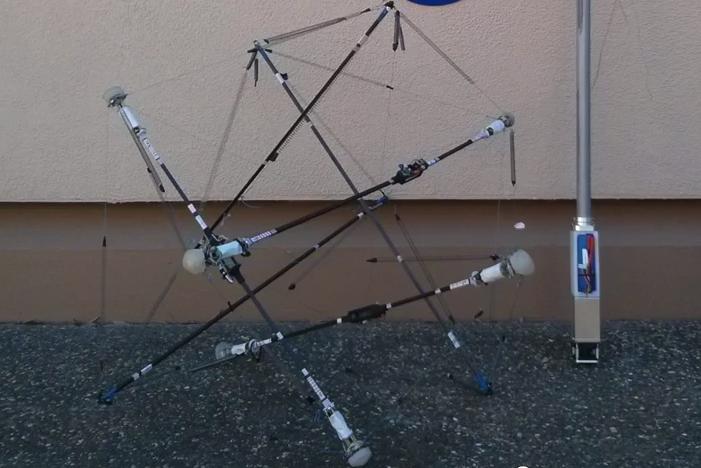
The extreme challenges and conditions faced by rovers during missions to explore other planets has inspired researchers and engineers to look into alternative, more suitable designs.
After considering the complicated choreography of a regular landing – as we saw with the Mars Curiosity rover in August last year – as well as the challenging terrain a rover often faces once it reaches a planet’s surface, engineers at NASA have come up with an ultra-flexible squishable robot designed to effortlessly cope with any planetary surface it finds itself on.
Although the so-called Super Ball Bot has been in development for some time, it’s only this week that we’ve been able to see a prototype of the creation in action (check it out in the video below).
Made up of hollow cylindrical rods connected by flexible materials such as elastic cable, the clever design draws on the principles of ‘tensegrity’ (a portmanteau of ‘tensional’ and ‘integrity’), allowing any impact to be safely absorbed along multiple paths.
The ball bot essentially rolls along a surface, adjusting rapidly and effortlessly to its environment no matter how challenging it happens to be. Scientific instruments for collecting and transmitting data could be housed inside the cylindrical rods.
Its durability and flexibility means it can actually be dropped onto a planet’s surface from a great distance – as high up as 62 miles (100 km) – thereby eliminating the need for complex multi-stage landing procedures involving parachutes, retrorockets, and other such paraphernalia.

The team behind the robot is considering sending it to Saturn’s largest moon, Titan, which has an atmosphere so thick that a relatively simple parachute-free landing is a real possibility.
Another advantage of NASA’s ball bot is its small size when packed, with the space agency envisioning sending hundreds of them on a single mission. Upon arrival their destination, the bots would be able to automatically spring into shape. Although the highly capable rovers currently in operation are able to send back a wealth of information about their environment, imagine how much data could be collected by hundreds of these ball bots roaming a planet’s surface.
While the ball bot is still some way off being ready for deployment – engineers are currently tackling the issue of precise movement – there’s an excellent chance that these remarkable collapsing robots will one day be rolling across faraway planets and moons, sending back information that could help us unlock the enduring mysteries of our solar system and beyond.


